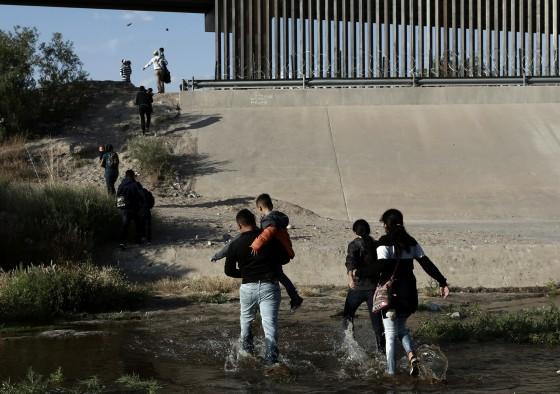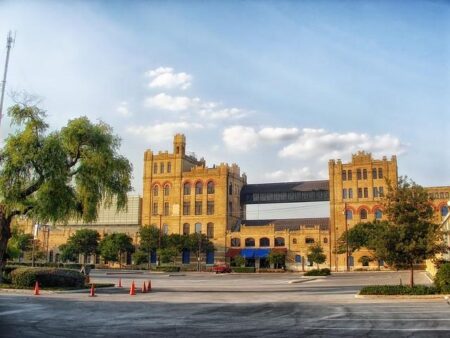Unveiling the Complex World of Migrant Smuggling: Networks, Methods, and Solutions
Expanding Webs: The Intricate Structure of Migrant Smuggling Networks
The illicit business of smuggling migrants across international borders has ballooned into a multi-billion-dollar enterprise, fueled by increasing migration pressures and enforcement complexities. These criminal organizations operate far beyond mere border crossings, establishing elaborate hierarchies that span continents‚ÄĒfrom Central America to parts of Africa and Asia. Their operations rely on a blend of corruption, intimidation, and advanced logistics, transforming what was once fragmented into highly coordinated systems. Each participant, from recruiters to transporters, plays a distinct role, profiting from the perilous journeys migrants undertake in search of safety and opportunity.
Core components sustaining these smuggling syndicates include:
- International coordination: Networks maintain communication channels across multiple countries, enabling migrants to traverse borders despite heightened security measures.
- Technological sophistication: Deployment of encrypted messaging platforms and GPS devices to track movements and evade detection.
- Corruption and collusion: Alliances with compromised officials and law enforcement personnel who provide protection and insider intelligence.
- Financial operations: Complex money laundering schemes that process millions in illicit fees paid by migrants.
| Position | Responsibilities | Approximate Earnings |
|---|---|---|
| Recruiter | Identifies and organizes migrants for initial stages | $2,500 – $6,000 per individual |
| Guide | Leads migrants through challenging border terrains | $1,200 – $3,500 per crossing |
| Coordinator | Oversees transportation logistics and safe houses | $12,000+ monthly |
Routes and Techniques: How Smugglers Navigate Borders
In response to increasingly fortified borders, smuggling operations have adapted by employing a variety of innovative methods tailored to diverse environments. Migrants are transported using concealed compartments in vehicles, improvised rafts for river crossings, and even underground tunnels. Smugglers leverage modern technology such as encrypted apps and GPS tracking to coordinate movements and avoid law enforcement. Routes often exploit less monitored areas, including remote deserts, dense forests, and mountainous regions, where surveillance is limited.
Frequently utilized smuggling tactics include:
- Traveling along disused railway tracks and seldom-patrolled backroads
- Crossing natural barriers like canyons and thick woodlands under cover of darkness
- Deploying diversionary convoys to mislead border agents
- Utilizing small aircraft for covert drops in isolated zones
| Route Type | Environment | Techniques & Equipment |
|---|---|---|
| Subterranean Tunnels | Urban and suburban areas | Electric lighting, reinforced walls, ventilation systems |
| Desert Passages | Arid, open desert | GPS navigation, strategically placed water supplies |
| Water Crossings | Rivers, swamps, wetlands | Inflatable rafts, camouflage nets, night vision aids |
Consequences for Migrants and Border Communities
The surge in migrant smuggling has devastating effects on both the individuals involved and the communities along border regions. Migrants, often fleeing violence or poverty, face exploitation by smugglers who charge exorbitant fees and expose them to violence, trafficking, and life-threatening conditions. Many families are fractured, with some members never reaching their destinations. This shadow economy fosters environments rife with abuse, undermining social cohesion and safety in border areas.
Border communities experience multiple challenges, including:
- Heightened pressure on local law enforcement and emergency responders
- Escalation in cross-border criminal activities and insecurity
- Economic disturbances due to unregulated illicit trade
- Social tensions fueled by fear and mistrust among residents
| Area of Impact | Effect on Migrants | Effect on Border Communities |
|---|---|---|
| Safety | Exposure to violence, hazardous conditions, and trafficking risks | Increased crime and insecurity |
| Economic | High smuggling costs without legal protections | Loss of legitimate revenue, growth of underground economy |
| Social | Family separations, psychological trauma | Community divisions, strained public services |
Combating Migrant Smuggling: Strategies and Innovations
Authorities worldwide are intensifying efforts to dismantle migrant smuggling operations through comprehensive, multi-faceted strategies. Enhanced intelligence sharing across borders enables tracking of financial flows and identification of key operatives. Cutting-edge surveillance tools, including drones, biometric scanners, and AI-powered monitoring systems, improve detection and interception capabilities.
Addressing the root causes driving demand for smuggling is equally critical. Educational initiatives inform vulnerable populations about the dangers of illicit migration routes, while expanding legal migration pathways aims to reduce reliance on smugglers. Key approaches include:
- Multinational task forces: Collaborative operations pooling expertise and resources.
- Targeted financial measures: Sanctions and asset freezes disrupting money laundering networks.
- Community outreach: Awareness campaigns and support services offering alternatives to smuggling.
- Policy reforms: Streamlining asylum and visa processes to facilitate safe migration.
| Strategy | Expected Outcome | Current Status |
|---|---|---|
| Multinational Task Forces | Improved cross-border coordination | Operational |
| Financial Sanctions | Disruption of criminal funding | Ongoing |
| Community Outreach | Lowered demand for smuggling | Pilot programs |
| Policy Reforms | Easier legal migration | In development |
Looking Ahead: Challenges and Opportunities in Tackling Migrant Smuggling
As migrant smuggling continues to flourish as a lucrative underground market, authorities face escalating difficulties in disrupting these increasingly sophisticated networks. Effective solutions require coordinated international policies that address both the demand for illegal crossings and the socioeconomic factors compelling individuals to undertake dangerous journeys. Without decisive and comprehensive action, the human toll and security risks will likely intensify, emphasizing the critical need for innovative enforcement and humanitarian strategies in the coming years.




